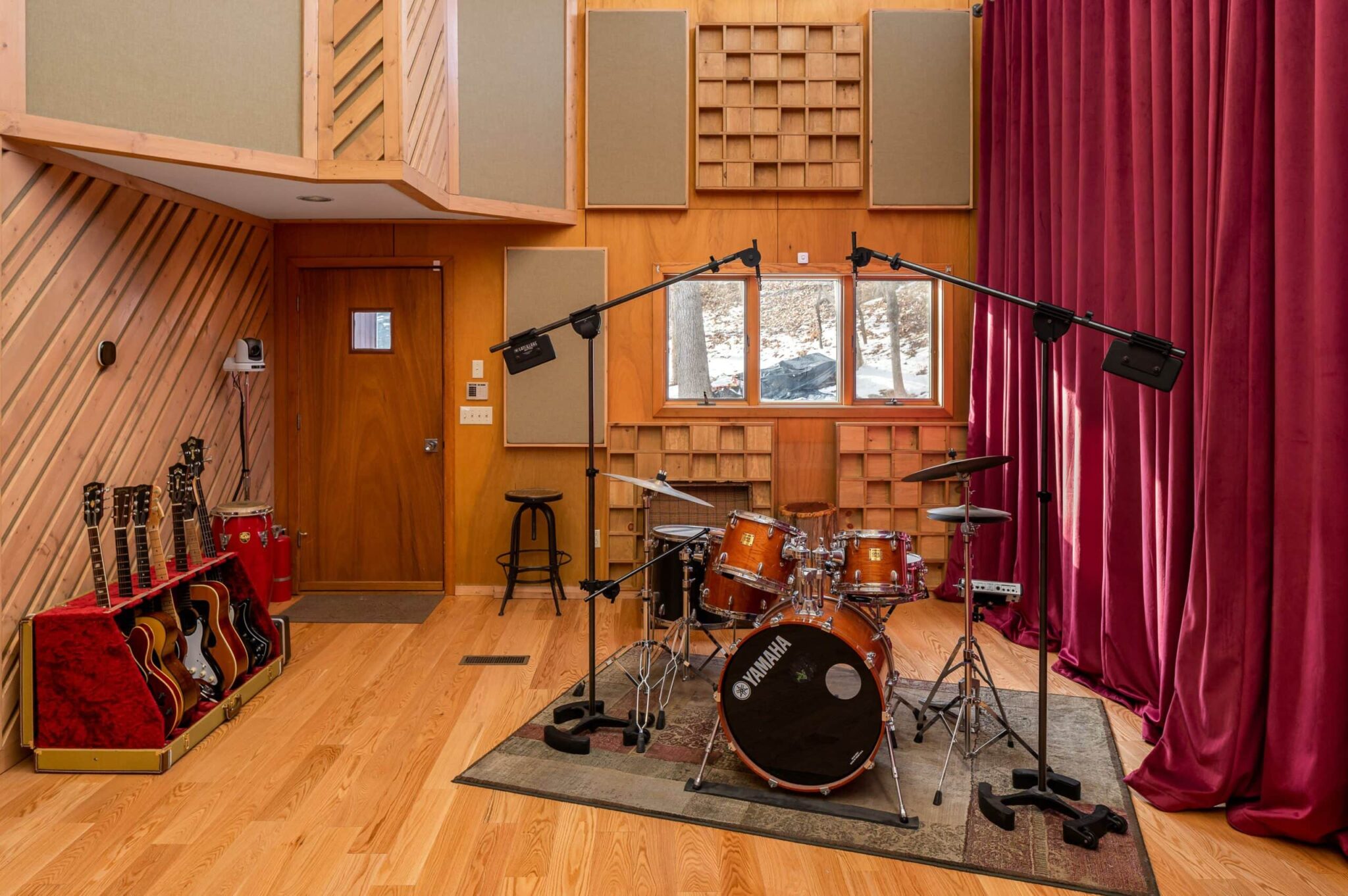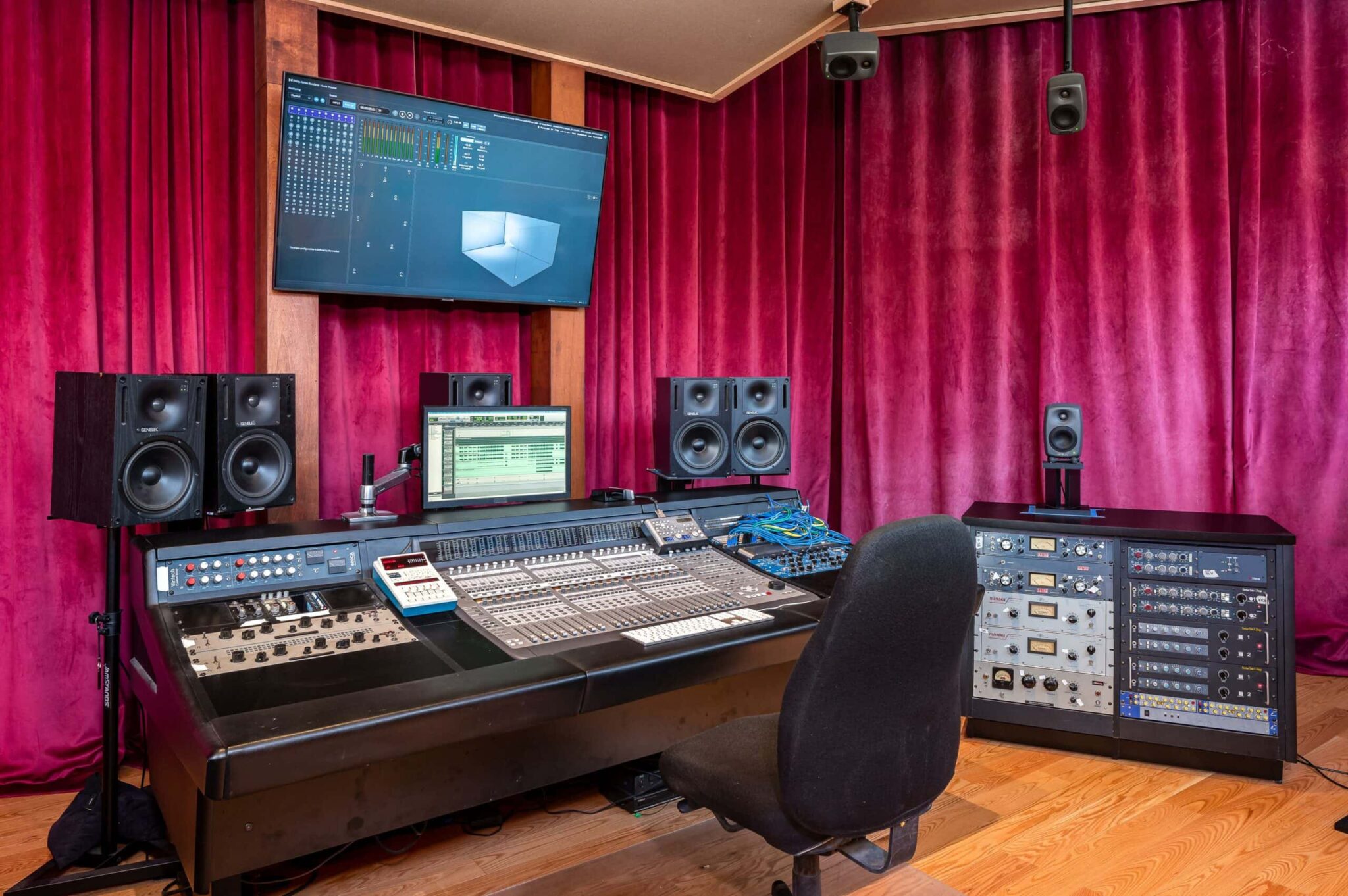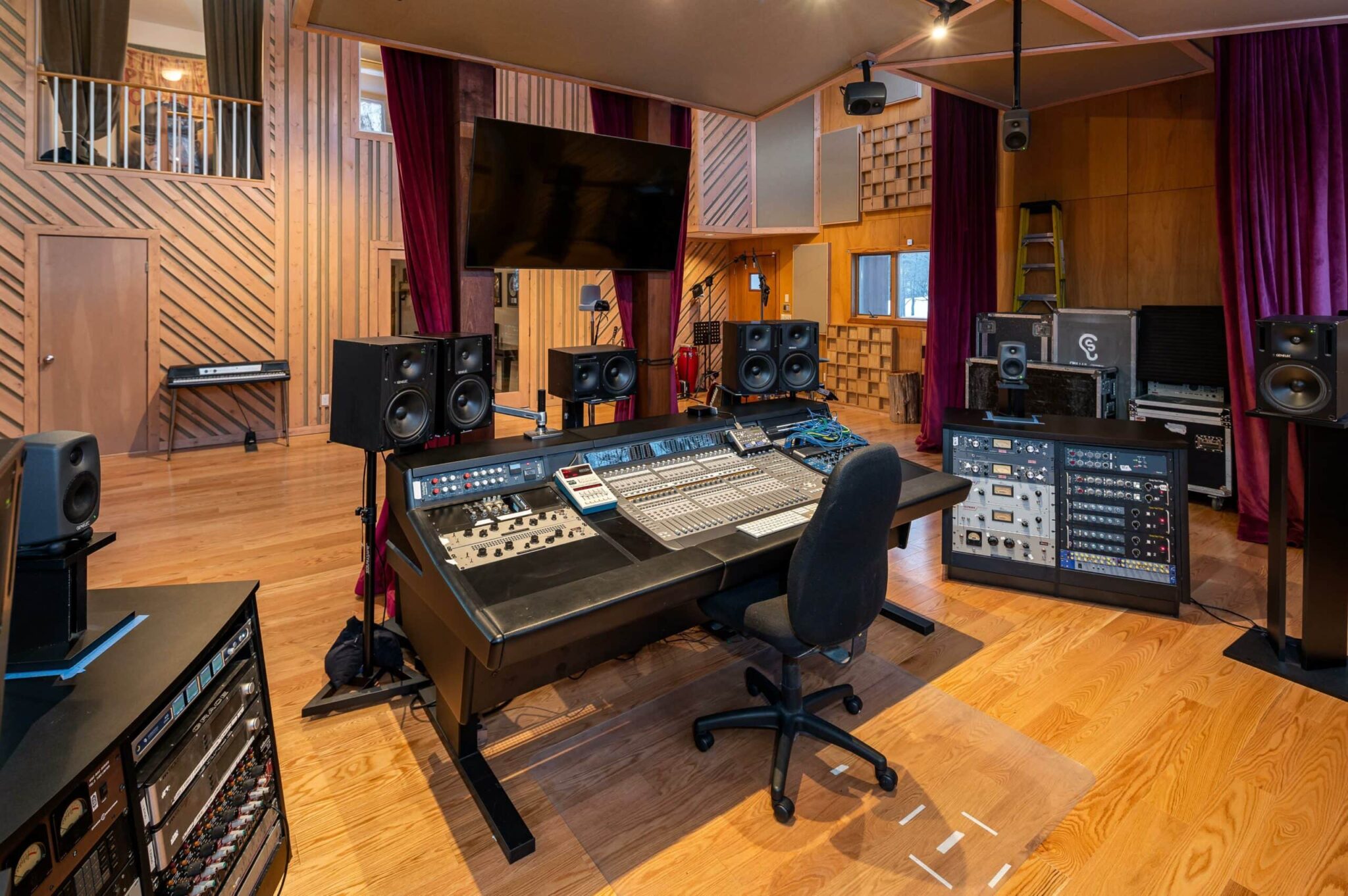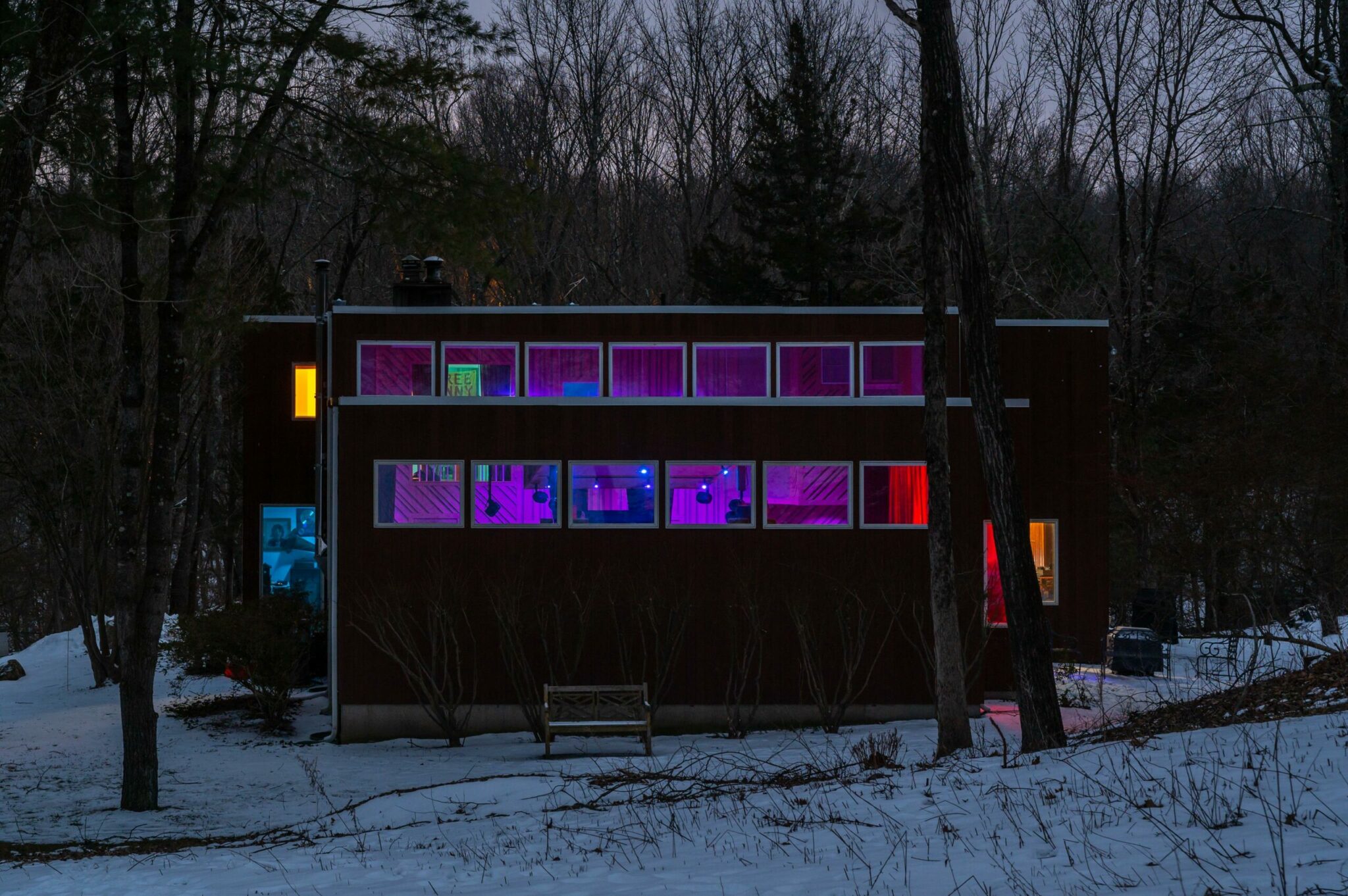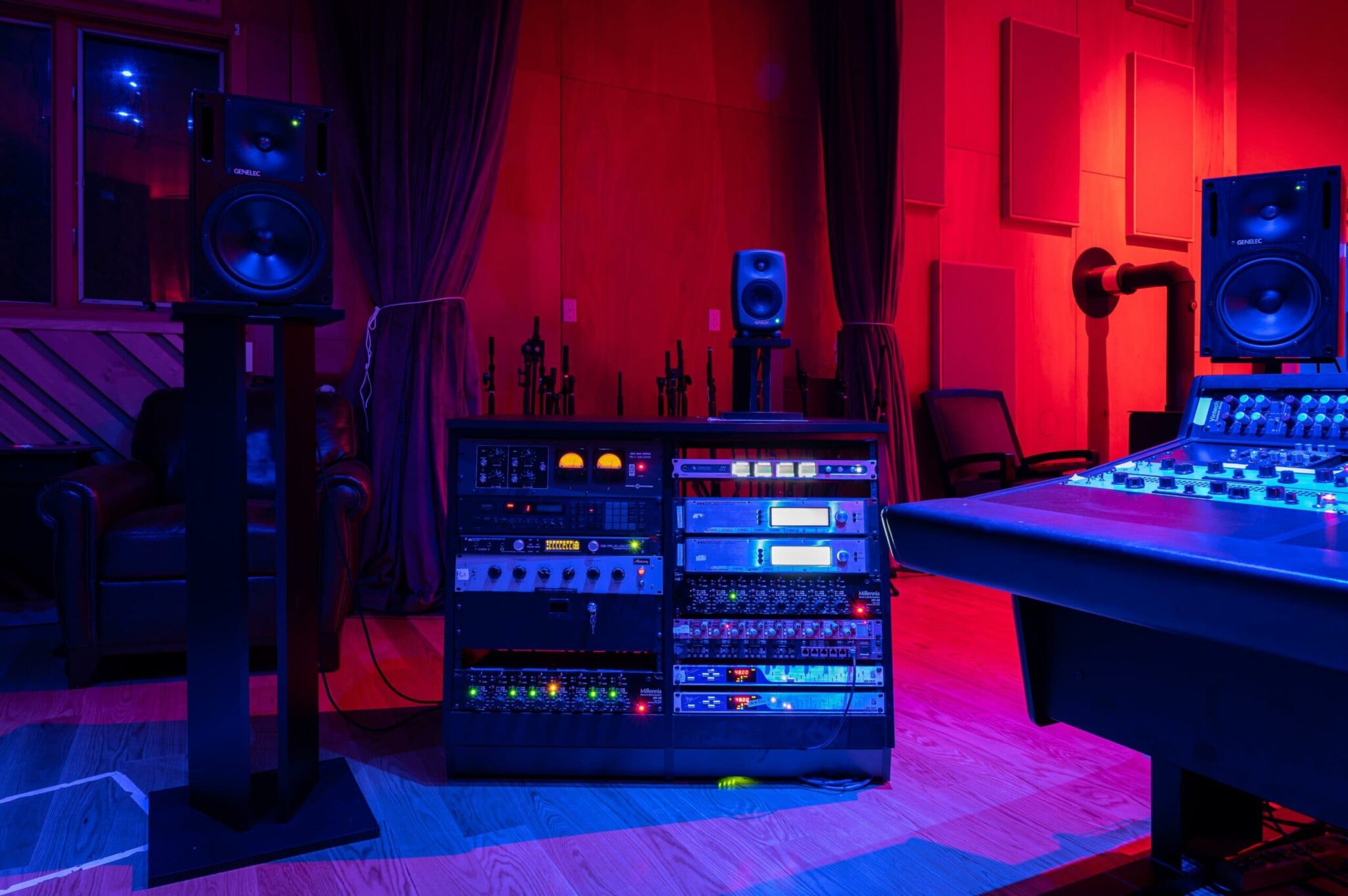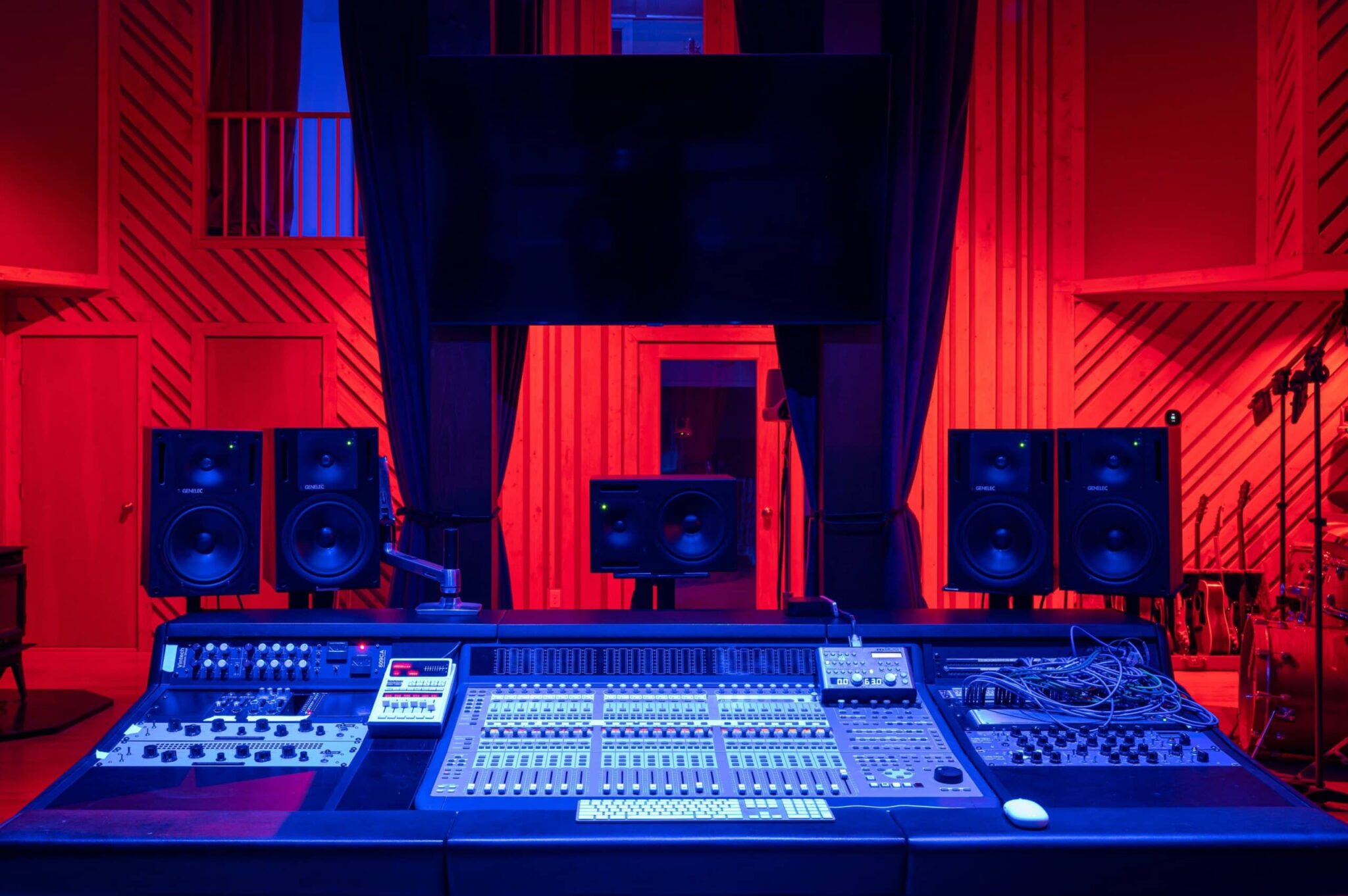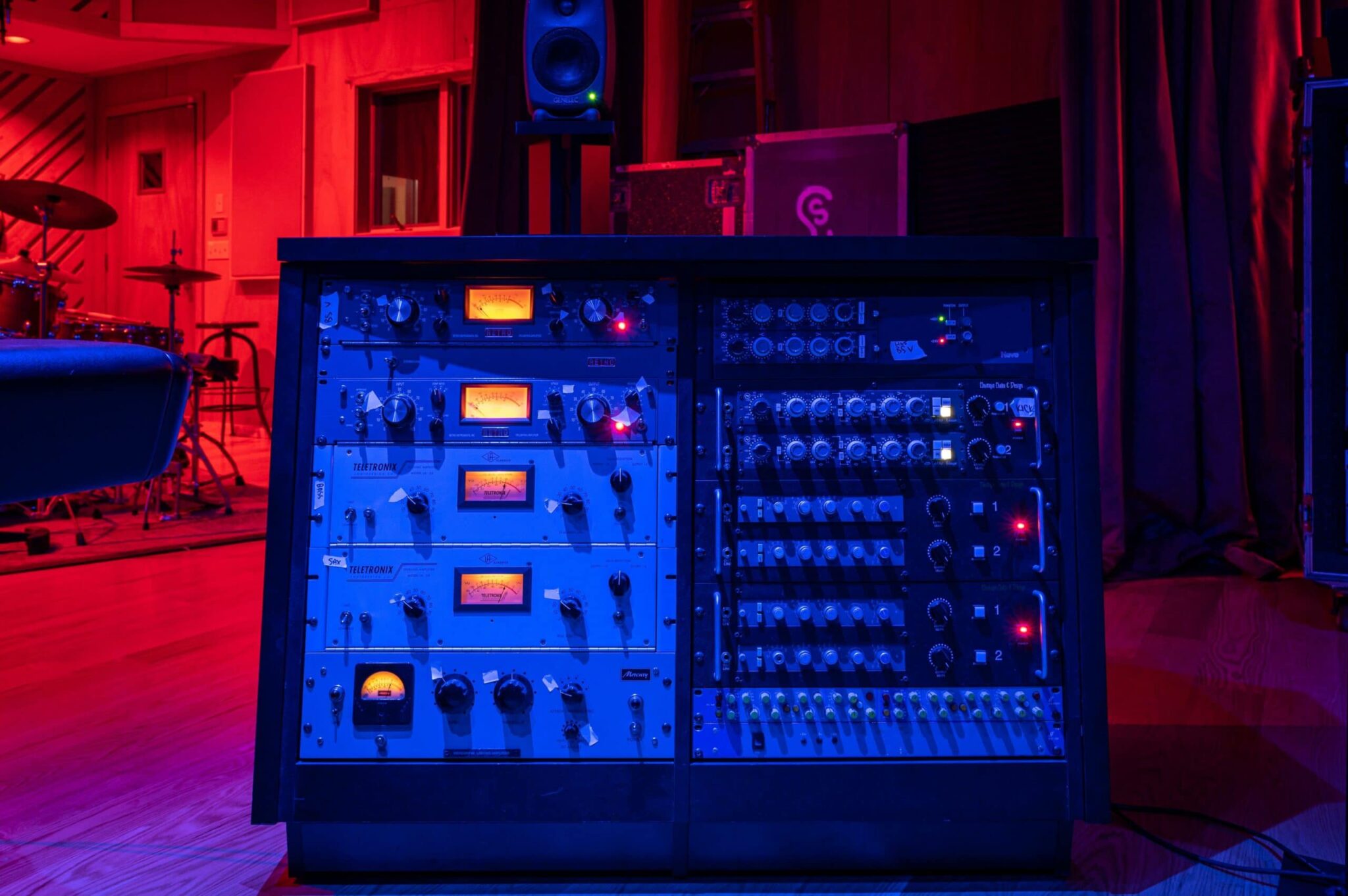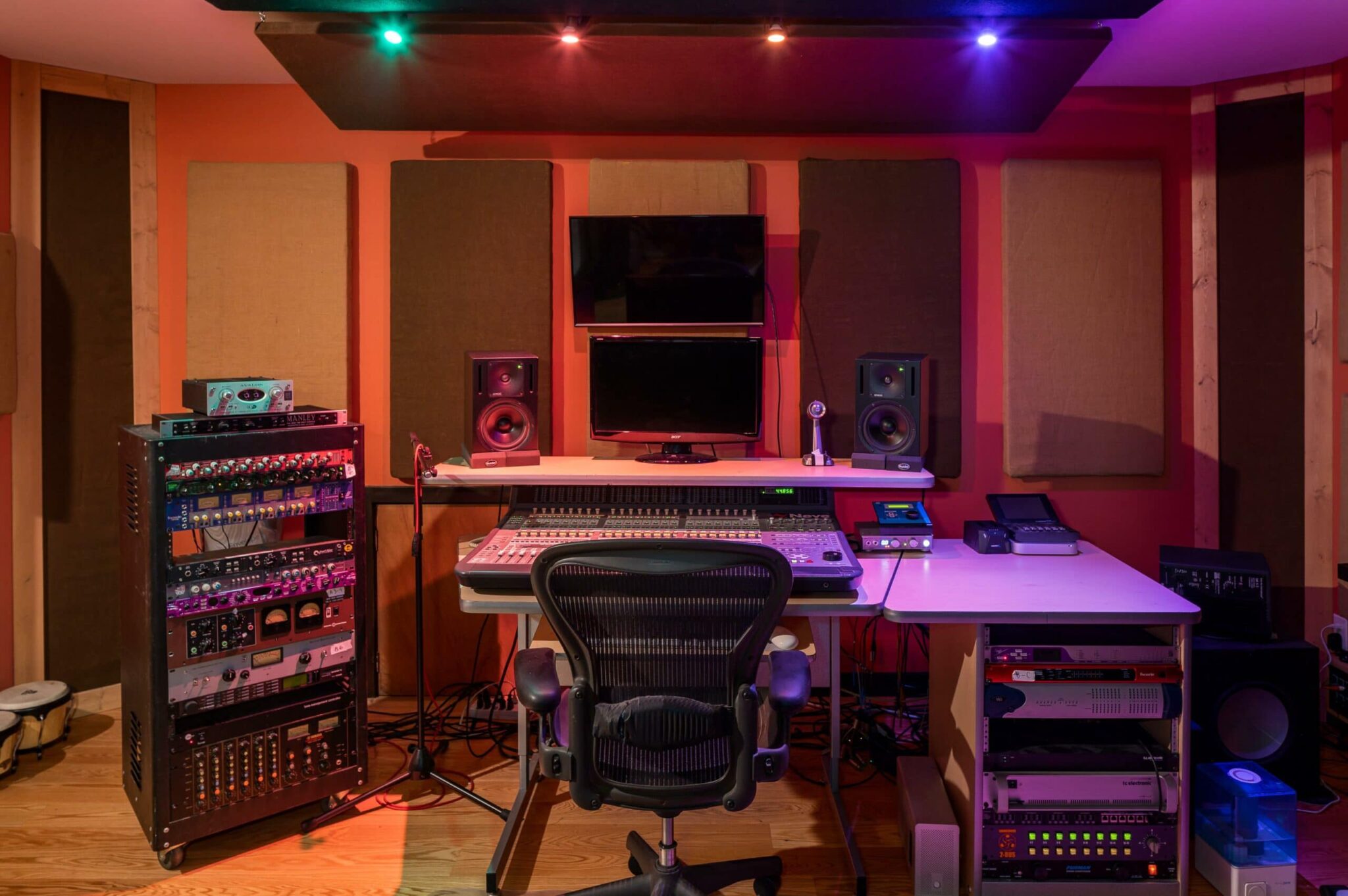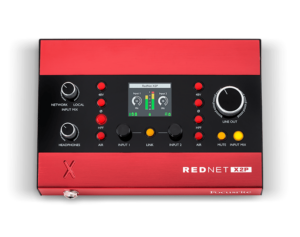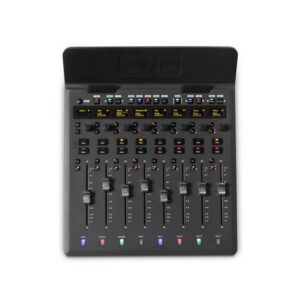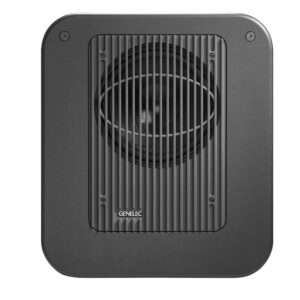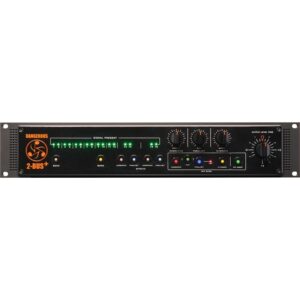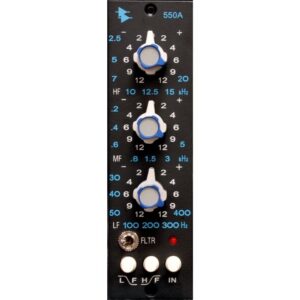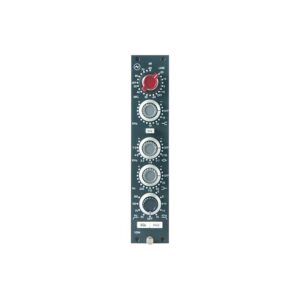proFILES
Chiller Sound
Part One
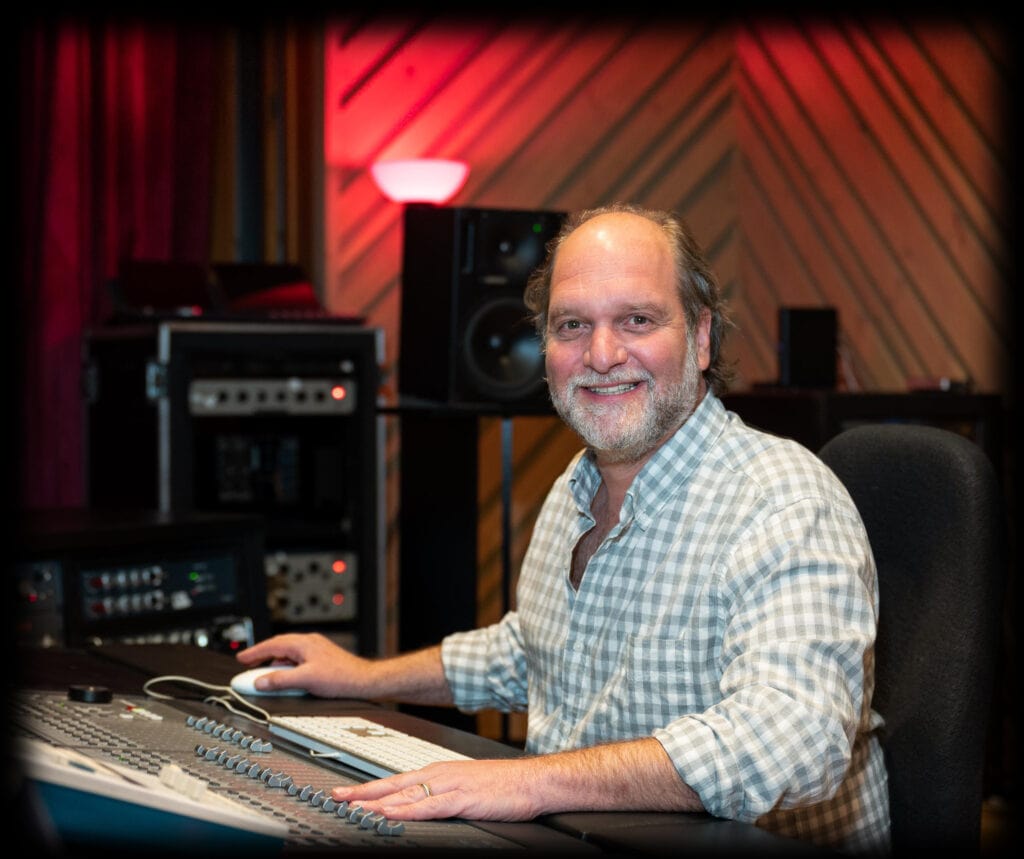
Chiller Sound was founded in 2001 by Jon Altschiller. Known for his attention to detail and extensive mixing credits, Jon recently moved his studio onto a 9-acre piece of land in Pound Ridge, New York, and has been hard at work creating truly immersive mixes. Westlake Pro’s Matt Knobel helped Jon design his new space to be able to mix both Dolby Atmos and Sony 360 Reality Audio in the same control room.
We recently caught up with Jon to talk about the project.




Westlake Pro: You spent much of your career in the middle of New York City. What prompted you to move out of NYC?
Jon Altschiller: I moved my studio from the city in July of 2020. My last studio was on 38th Street, in Manhattan. My building had kind of shut down like most of the city during the early pandemic. So I started working at my house and then sneaking downtown. Little by little, I started taking gear out and putting it into my living room.
As a freelance engineer, I spent a lot of time in studios all over the Northeast like Bearsville, Blue Jay (in Massachusetts), and Long View Farm (in Massachusetts). I’d been looking for an idyllic location for a long time. I really liked the idea of a sanctuary space, not only for myself but for artists.
So after looking for years, I found a sculpting studio on nine and a half acres of land. I fell into it. When the realtor showed me this place, I immediately said, “I’ll take it.” The first two months we spent building the control room. It was construction day and night to get the control room done so that I could make the move out of the city.
WLP: Can you tell us about your control room and how it came to be? It’s very unique.
JA: Matt Knobel from Westlake Pro was brilliant when it came to helping me design the space I’m in. Initially, I was going to have the control room and live room in separate spaces. He was the one who noticed the room was symmetrical. The room is 31 by 31. Half of it has a 17-foot high ceiling, and half has a 12-foot high ceiling. Since I do immersive mixing in addition to stereo and surround mixing, I didn’t want to have different places for different things. I didn’t want to have a lot of small rooms in this one big room. So we decided that we would make the shape we wanted with heavy theater curtains as dividers. This lets me open everything up when I have a band in, creating this nice huge space; it’s really unique. Here you can spread your wings, literally.
WLP: I wanted to ask you about your open concept in this studio. Is it nice to have so much space in your new location?
JA: Having this extra space is wonderful. I’ve had two studios in New York City before this, and I had a lot of patch bays and a lot of cabling. The concept of having the control room in the live room is certainly not a new one, and has really worked out in this design.
WLP: What kind of monitors did you outfit your new room with?
JA: In my Dolby Atmos setup, I am committed to Genelec. I also have Genelecs in my B room as well. Now that I have more space, I hope to turn my Genelec 8020s that I use in my 360RA setup into 8330As. I still love my old 1031As, and I’m also using the Genelec 7060B sub, which has been great.
I’ve always had a lot of Genelecs, and Genelec has always been there for me. I’ve spent years on the road with the band Phish and doing festivals. I always travel with extra stuff because you need to have everything (in fact, two of everything). Genelec has excellent customer support with getting stuff fixed. I’d be in the next town with a blown driver, and I’d call them and say, “I’ll be in Indianapolis in six days!”. By the time I’d arrived at the hotel, the replacement driver was waiting there for me. That’s what you need, especially on the road.
WLP: What about routing? How are you routing between your Pro Tools rig and your outboard processing?
JA: I use the Avid MTRX Studio for Dante to and from Pro Tools and the rest of my gear. Matt helped me out a lot when I bought the Avid MTRX Studio – he did a full onboarding session to teach me the ins and outs. That was really awesome. He was also the one who convinced me to wire the studio using Dante protocol. With Dante, I can do anything anywhere. For instance, I have a 300 foot Ethernet cable and have done recordings outside in the woods. The Focusrite RedNet X2P has mic pres and headphone monitoring over one POE Ethernet cable and fits in the palm of your hand. You can just plug in and go – it’s amazing and makes things so easy.
WLP: How’d you get started with Immersive Audio? With the different platforms for immersive mixing, do you find yourself picking and choosing depending on the project?
JA: I started immersive mixing about four years ago now. I came in from the Sony 360 Reality Audio side. They flew me to Japan, and I helped with the beta testing. I did a lot of work with them in research and development. They brought me in as an engineer, and I know it from the ground up.
I was introduced by Nugs.net [live concert streaming], who I work with releasing Bruce Springsteen live releases. They had a whole bunch of bands that started releasing live concert videos with 360 Reality Audio mixes. So I got to mix Dead & Company, The Raconteurs, Alicia Keys, Pearl Jam, and more.
WLP: Since you mix both live recordings and studio albums, how has the recording side of Immersive sound changed? Are you using more audience mics or anything? Or are those decisions made in the mix room?
JA: Certainly, there have been a few events where they put up a lot of room mics. The Alicia Keys concert that I mixed had about 18 room mics. I also just recorded and mixed The Count Basie Orchestra at Birdland, where I set up my room mics in an Atmos configuration.
WLP: I’m really excited to hear that people are starting to think about capturing the space and ambience for Immersive formats from the get-go.
JA: I agree with you 100%. Having it as a composition tool is where the strengths are. When the technology takes off, the artists will pick up on that, and it’ll be awesome.
There are tons of different production possibilities. Artists can say, “let me add another guitar part over here,” or “this would make it much more ethereal.” Think about how much more space you feel within the headphone experience! I had a great presentation with a venerable live engineer to present one of my mixes, and he freaked out, saying, “Oh my gosh, I need this technology for my in-ear monitor mixes.”
WLP: That production aspect is certainly exciting because it’s such an amazing creative tool. Can you tell us how you’ve incorporated both Sony 360 Reality Audio and Dolby Atmos into one control room?
JA: They really are two separate experiences, but what Matt [Knobel] did was brilliant, and I know other studios are adopting it now.
When I first started working with Sony 360 Reality Audio, my initial thought was, “you put extra speakers in your mix room”. But one of the most important differences between Dolby Atmos and Sony 360 Reality Audio is that you have a lower hemisphere in the Sony 360 system. You have nine speakers in the front, and you have them at low, ear level, and high positions. So a basic Sony 360 Reality Audio system has almost three levels of a 5.1 system if you think about it that way. And it’s almost like a full sphere. You can have sounds coming from directly underneath you. You can have objects coming directly from the floor and then going to the ceiling, which is really nice about the immersive experience.
The Dolby Atmos system has speakers from your head level and then up on top. So it’s a little more above you. What’s very interesting about the Atmos system is that it’s based on a rectangle. So if you have something going up and down, it’s a straight up and down motion, and it feels very wide. If you move stuff up and down on the Sony system, it will almost follow that sphere. It gets a little closer and narrower as it goes up. I bring this up because you can’t have a console between you and the lower hemisphere speakers, right? Because your console would be in the way of your speaker listening position. So what Matt and I devised in this room was that I would take the listening spot I listen to every day in stereo, and turn my seat around and face the back wall for my Sony 360 Reality Audio mixing.
Then I could have the nine speakers directly in front of me in the same listening position. So if I’m in my Pro Tools session, I can make my changes, turn behind me, and then be in the perfect position for my Sony 360 Reality Audio setup. I have the speakers on the floor, the speakers up to the ceiling, and nothing is in the way of the ones on the sides. In the same sense, when I face the console, I’m perfectly aligned with my Dolby Atmos system. So as I do separate mixes, I can have both mixes going out of my system at the same time. It’s nice that I can go back and forth. With Dante and DADMan it’s so easy to switch, I hit a button, and I have my Atmos setup. Some labels ask for delivery in both Dolby Atmos and Sony 360 Reality Audio. So I can go between the 360 Reality Audio and an Atmos session in the snap of a finger. It’s really awesome.
WLP: Turn the chair, snap the fingers,
JA: Literally! I go back a long way with Matt, and I love him. But I’m really impressed that he did this. He did such a great job. When we were first discussing the design of this room, we made sure that it was going to be Dolby Atmos compatible. Matt was the one who encouraged me to be ready for the future. So now, when I get a call asking if I have Atmos as well as Sony 360 Reality Audio, I can say yes, thanks to Matt.
WLP: It seems like you went from New York City recording life, in the middle of the pandemic, to this amazing studio purpose-built for immersive mixing.
JA: Absolutely. 100% right on that. What did I do during lockdown? I left the city and built this crazy place! When I saw the room originally, I designed it for Sony 360 Reality Audio, and I’m really happy with how Matt helped me incorporate Dolby Atmos in the same space. Personally, I’ve always embraced the technology. I understand object-based audio, and I think once you understand the concept of immersive, it becomes second nature.
READ PART TWO
In Part 2 we get an in-depth look at Jon’s experience learning immersive mixing, and some tips he has for young engineers looking to take advantage of this huge opportunity.
-
Focusrite RedNet X2P 2×2 Dante Interface
$1,299.99Add to WishlistAlready In WishlistAdd to cartAdd to Wishlist -
-
Avid MTRX Studio 64-channel Pro Tools Interface
$4,999.00Add to WishlistAlready In WishlistAdd to cartAdd to Wishlist -
Genelec 7360APM SAM Studio Subwoofer
$2,565.00Add to WishlistAlready In WishlistAdd to cartAdd to Wishlist -
Dangerous Music 2-Bus+ 16-Channel Analog Summing Mixer
$3,199.00Add to WishlistAlready In WishlistAdd to cartAdd to Wishlist -
API 550A Discrete Classic 3 Band EQ
$1,195.00Add to WishlistAlready In WishlistAdd to cartAdd to Wishlist -
AMS Neve 1084 Mono Mic Preamp/EQ (Vertical)
$4,620.00Add to WishlistAlready In WishlistAdd to cartAdd to Wishlist
